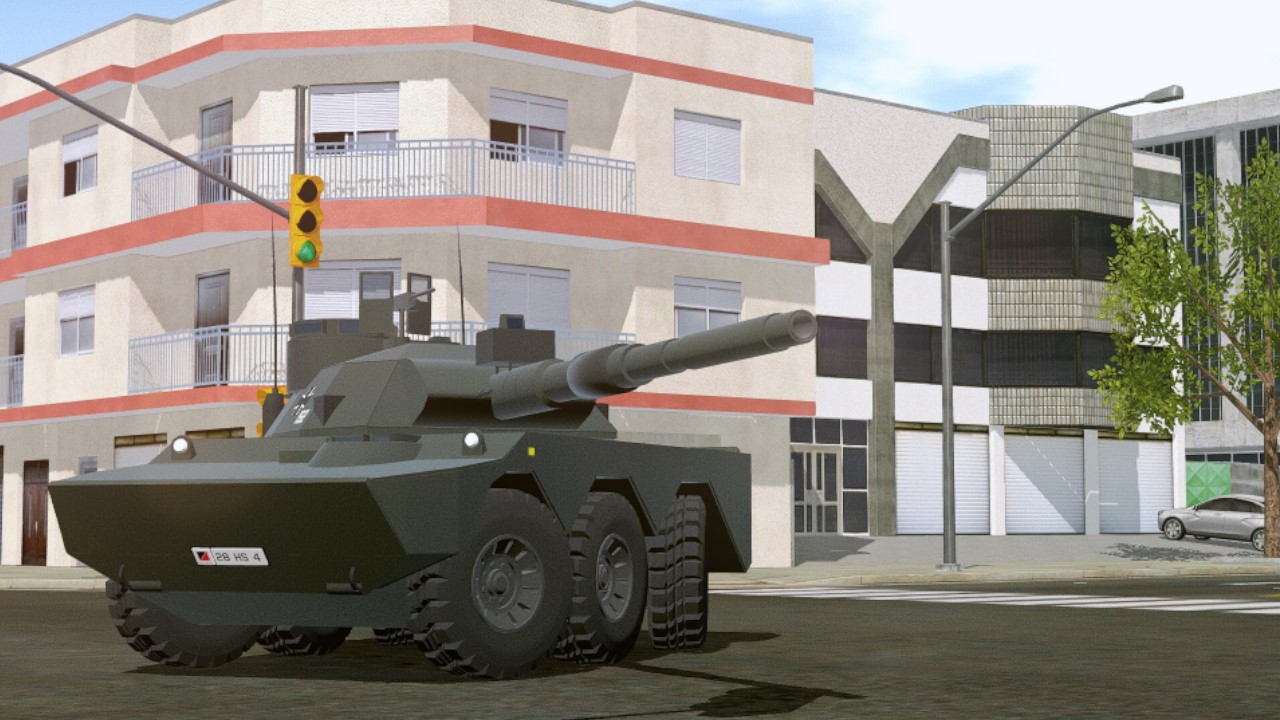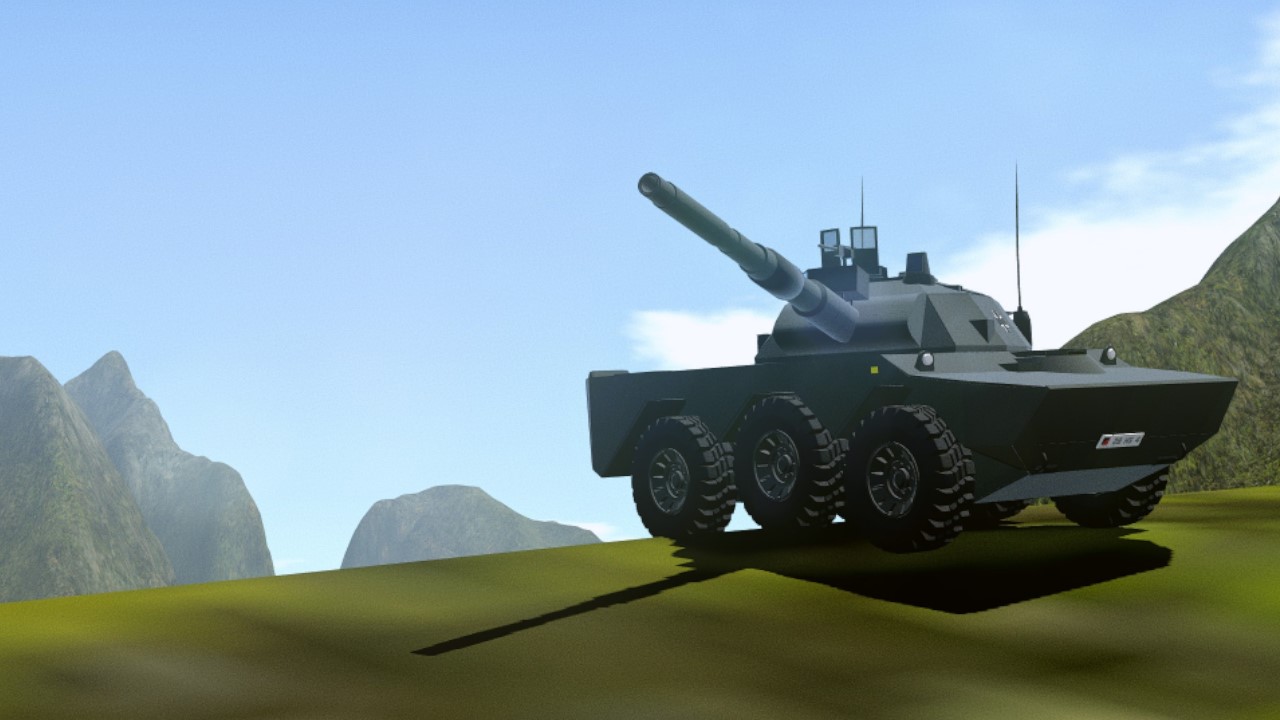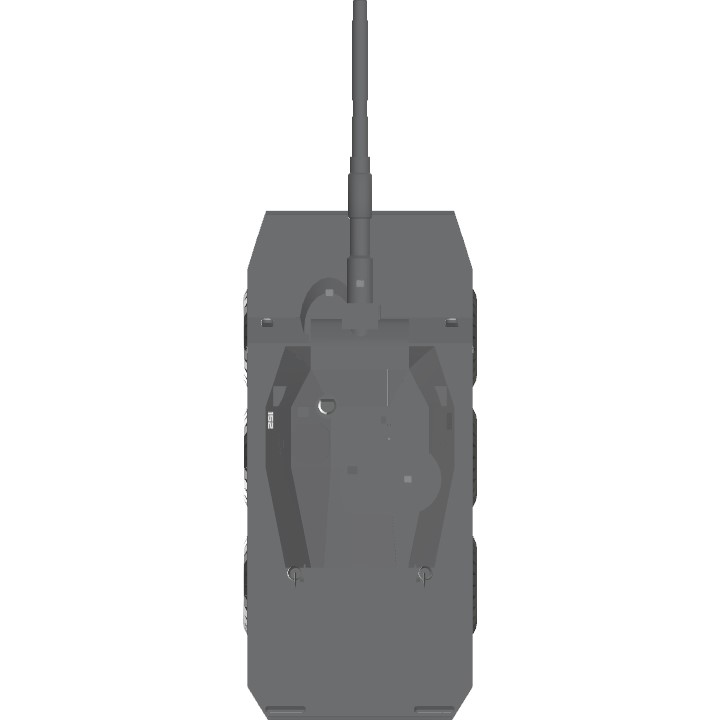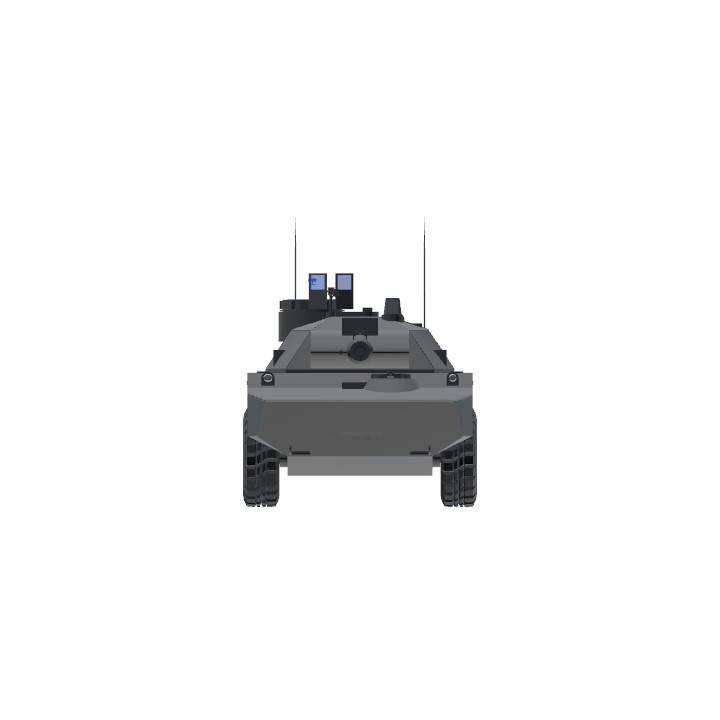The Spähpanzer Ozelot is a fire support vehicle / armored reconnaissance vehicle designed by Elbmetall AG for service in the Teutonische Bundeswehr since 1972. Initially envisioned as a purely reconnaissance platform, the duty was already assigned to the smaller, cheaper Spähwagen Python, which in result shifts nearly everything regarding the design principles of the Ozelot into more of a fire support vehicle. It is praised for its ease of maintenance and fuel efficiency.
The year is 1970. Bundeswehr's aging stock of Spähpanzer Katze resulted in the Modern Fire Support 70 (MFS70) program to procure its successor. Taking into account past combat reports and analysis, Elbmetall's model is chosen for further development. However, the appearance of Spähwagen Python resulted in a total shift of the design. In 1972, the vehicle began its first field testings which resulted in an outstanding first impression. The vehicle was accepted into service in 1973 and became the standard reconnaissance / fire support platform of the Bundeswehr in 1975.
The first mass deployment of the Ozelot was during the Almazian War of 1992 where Teutonia intervened in the Volenian invasion in the side of the Almazians alongside Tactonia and her allies. Due to terrain difficulties and command inexperience, the Ozelot suffered losses especially in the Battle of River's End near the Zien River. This turned around, however, when the command and regimental structure of a reconnaissance group is reorganized and reformed during General Klopf's reforms in 1994; since then, the Ozelot is expected to serve until 2025.
GENERAL INFORMATION
- Type: FSV/ARV
- Main Armament: 1 × 120 mm Panzerabwehrkanone 120/1
- Max. Speed: 76 kph forward backward
- Armor: 20-50 mm, aluminum, ceramic and fiberglass composite + spall liner
- Crew: 4
Specifications
Spotlights
- SPairforce 1.9 years ago
- SILVERPANZER 1.9 years ago
General Characteristics
- Created On Windows
- Wingspan 9.6ft (2.9m)
- Length 29.5ft (9.0m)
- Height 12.0ft (3.7m)
- Empty Weight 33,748lbs (15,308kg)
- Loaded Weight 34,670lbs (15,726kg)
Performance
- Wing Loading N/A
- Wing Area 0.0ft2 (0.0m2)
- Drag Points 2862
Parts
- Number of Parts 316
- Control Surfaces 0
- Performance Cost 1,011






What will you say if your ozelot meet my IFV Abrams?
https://www.simpleplanes.com/a/p6dVyK/Abrams-82-IFV
German AMX-10RC
@Ccolemer3 alright
https://www.simpleplanes.com/a/jd9Spp/H-3-PL2C
Can you try my mbt